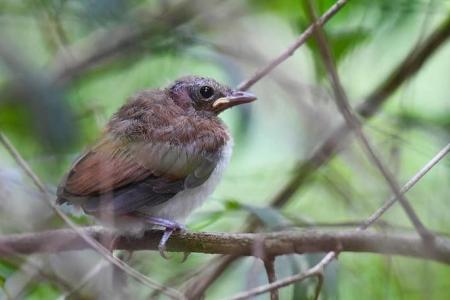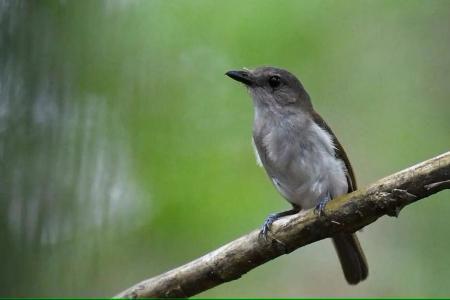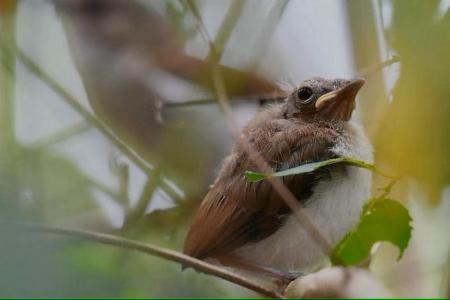First mainland Singapore breeding of mangrove whistler confirmed
An endangered bird native to Singapore has been observed to have bred in the Changi area for the first time in more than 70 years.
The mangrove whistler (Pachycephala cinerea) used to be fairly common on the main island of Singapore, but its population has declined drastically since the 1970s.
Despite its name, the species is well-adapted to other habitats besides mangroves. These include the coastal vegetation, plantations, wooded gardens and island forests of Singapore’s offshore islands, such as Pulau Tekong, Pulau Ubin and Kusu Island, where small populations of the mangrove whistler reside.
This species is populous in the multitude of Indonesian islands south of Singapore, including Bintan and Batam, as well as in India and the Andaman islands.
While it was widely believed that the species was extinct on mainland Singapore, there has been an increase in sightings of the bird here. These include sporadic records of brief-staying mangrove whistlers across the island.
But avid birder Rogier Niessen made a rare sighting at Changi Bay Point – not just of one bird, but of a little family.
It was on his eighth trip to the area in 2023 that Dr Niessen, who has been birdwatching for about 15 years, spotted an enigmatic mangrove whistler.
He spotted the species again on his next two trips in 2024, with a more exciting discovery during the latter trip, in April.
As he observed an adult mangrove whistler hunting for insects for about 10 minutes, he then noticed it hovering around the stump of an uprooted tree and make a bird call.
“It really was like it was calling something. Then, like being struck by lightning, I discovered the reason for the bird’s behaviour – a tiny ball of feathers was sitting in the shrub in front of me, just 1m from the ground,” he said, adding that he felt blessed to see it on mainland Singapore.
He observed the parent hunting and feeding its youngling for another 10 minutes before they disappeared into the undergrowth. He then spotted a second adult mangrove whistler, possibly the second parent, around 200m from where the first adult and fledgling were observed.
The appearance of the fledgling indicated that it was very young and must have been hatched on Singapore island.
This observation provides a rare breeding record for the species on mainland Singapore – the first in more than 70 years.
Bird Society of Singapore president Keita Sin said this is significant, as it suggests that the species could be re-colonising this site.
It is possible that the mangrove whistlers flew over from one of the offshore islands like Tekong or Ubin, which are near Changi Bay Point, which is located on the eastern coast of Singapore, or from even farther afield such as Riau, Indonesia, or Johor, Malaysia.
Explaining how it is determined if birds are breeding locally, Mr Sin said: “Breeding birds can be confirmed if nests are documented, or if recently fledged birds are found being fed by their parents.”
Sightings of birds that are old enough to fly cannot be used as evidence of local breeding, as they could have hatched elsewhere before flying to Singapore.
Mr Sin, Dr Niessen and Bird Society’s chair for the data and tech committee Raghav Narayanswamy co-wrote a report on the April sighting and breeding record for the journal Nature in Singapore, which is published by Lee Kong Chian Natural History Museum.
The article said that with the reappearance of the mangrove whistler on Singapore’s main island, safeguarding local mangrove and coastal forests has become even more crucial for their survival.
The last and only other nesting record of the mangrove whistler here was made in 1950 by Carl Alexander Gibson-Hill, who was the last British director of Raffles Museum, which is now known as the National Museum of Singapore.
Get The New Paper on your phone with the free TNP app. Download from the Apple App Store or Google Play Store now



